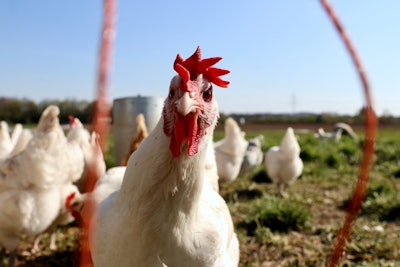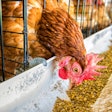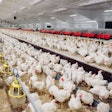
The U.S. Grains Council (USGC) recently released Year 2 of its Corn Origins Report, funded by the Minnesota Corn Research and Promotion Council, North Dakota Corn Utilization Council and South Dakota Corn Utilization Council, which explores the performance of U.S. corn against other origin corn in poultry diets.
There are numerous advantages to buying U.S. corn, including higher levels of available starch for animal digestibility, lower levels of mycotoxins and larger kernel size, and the USGC's original study confirmed the origin of corn used by feed millers worldwide has an impact on the financial performance of their feed industries and, ultimately, the growth of their livestock.
In the newly published study, commercial corn samples were collected from the warehouse of an international feed company in Colombia – U.S., Argentinian and Brazilian corn. This corn was re-exported to the U.S. and sent to Auburn University to run feeding trials in poultry to assess growth performance, carcass traits and nutrient digestibility.
The study found that birds fed diets with U.S. corn consumed less feed throughout the entire grow-out phase compared with those fed Argentinian or Brazilian corn. The lower feed conversion rates (FCR) in the poultry fed U.S. corn translated to significant long-term cost savings. These savings, depending on the number of poultry produced annually, translated into significant cost savings.
“When the [USGC] originally started this study, we were hoping to address our international customers concerns around the fragility of U.S. corn and the breakage that occurs during the export process,” said Kurt Shultz, USGC senior director for global strategies. “So, we went to the warehouses of our customers to get corn at the end of the export channel, in the process of conducting the study, we found that U.S. corn despite its fragility, outperforms other origins in terms of digestible starch.
"These benefits are not immediately apparent in an individual chicken, but when you look across a flock of millions of birds per year, which is typical in commercial poultry operations, it leads to hundreds of thousands of dollars of additional profitability against South American corn," Shultz added. “International buyers have a choice when choosing which origin they buy their corn from, however, those regularly buying U.S. corn have a competitive advantage, in terms of profitability, than those using other origins."
Moving forward, the USGC is planning the next stage of the study which will be to conduct commercial trials with two to three international feed companies. The USGC will conduct milling trials to benchmark the energy and milling costs of various origins and their performance in commercial poultry operations to drill down and measure animal performance. This data will lead to total costs of production based on the origin of the corn. Ultimately, the study will highlight the performance benefits of U.S. corn and how it improves the competitive advantage and profitability of customers in an increasingly competitive environment.

















